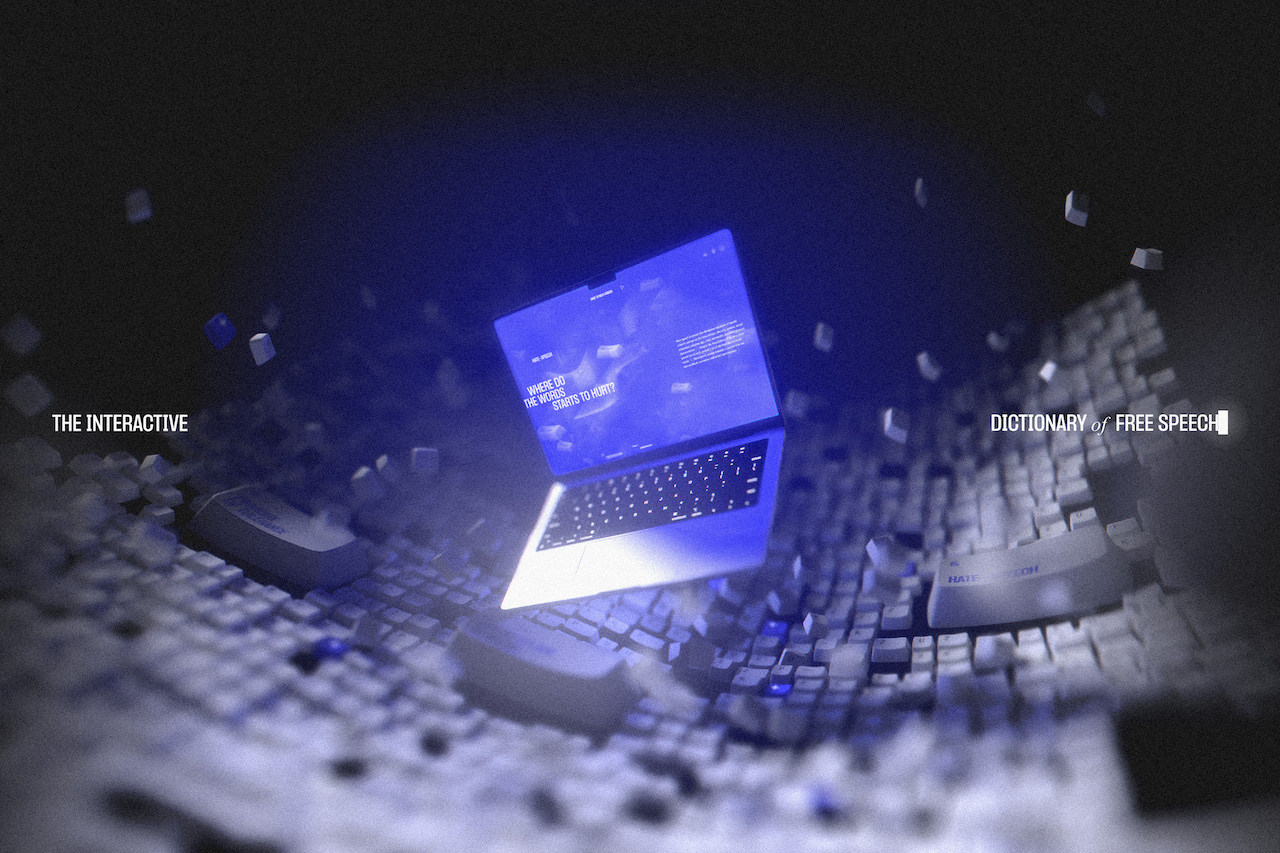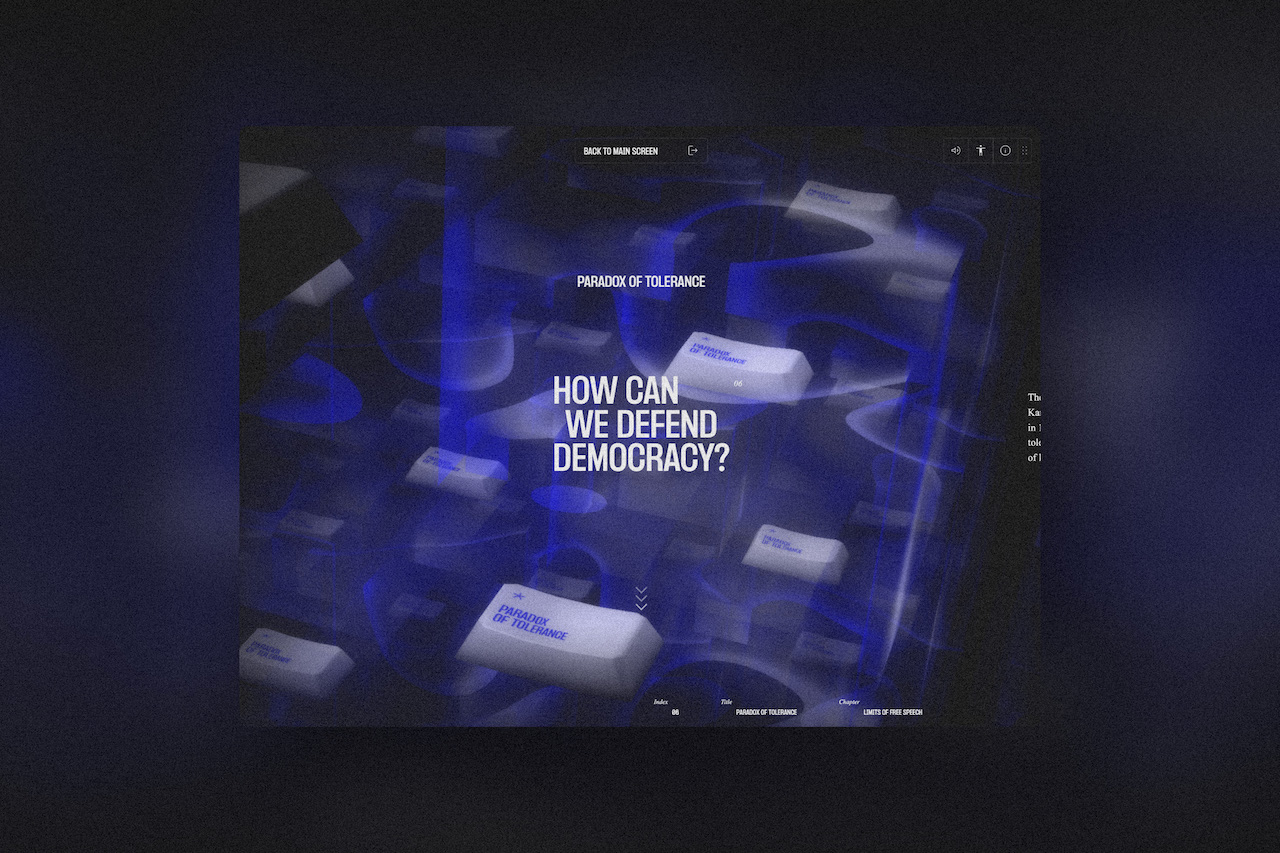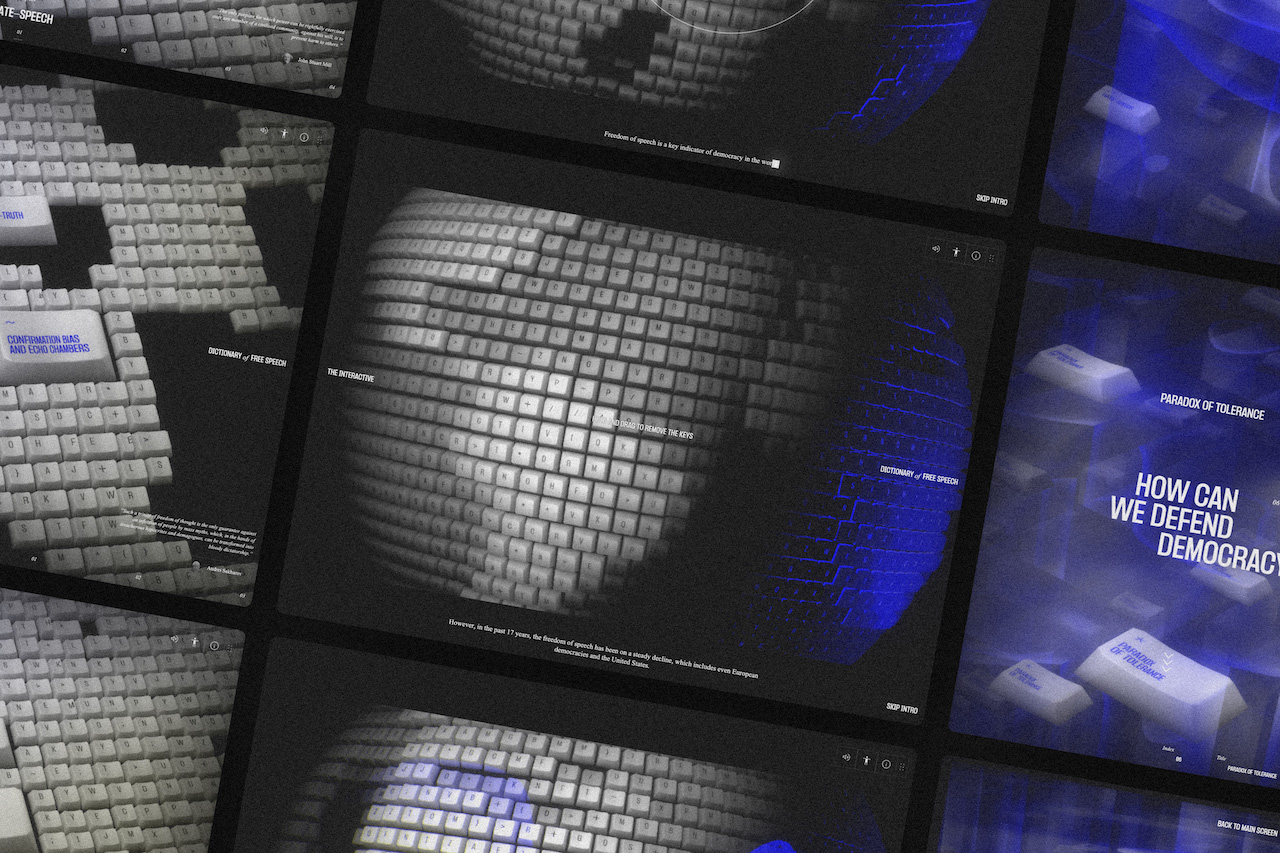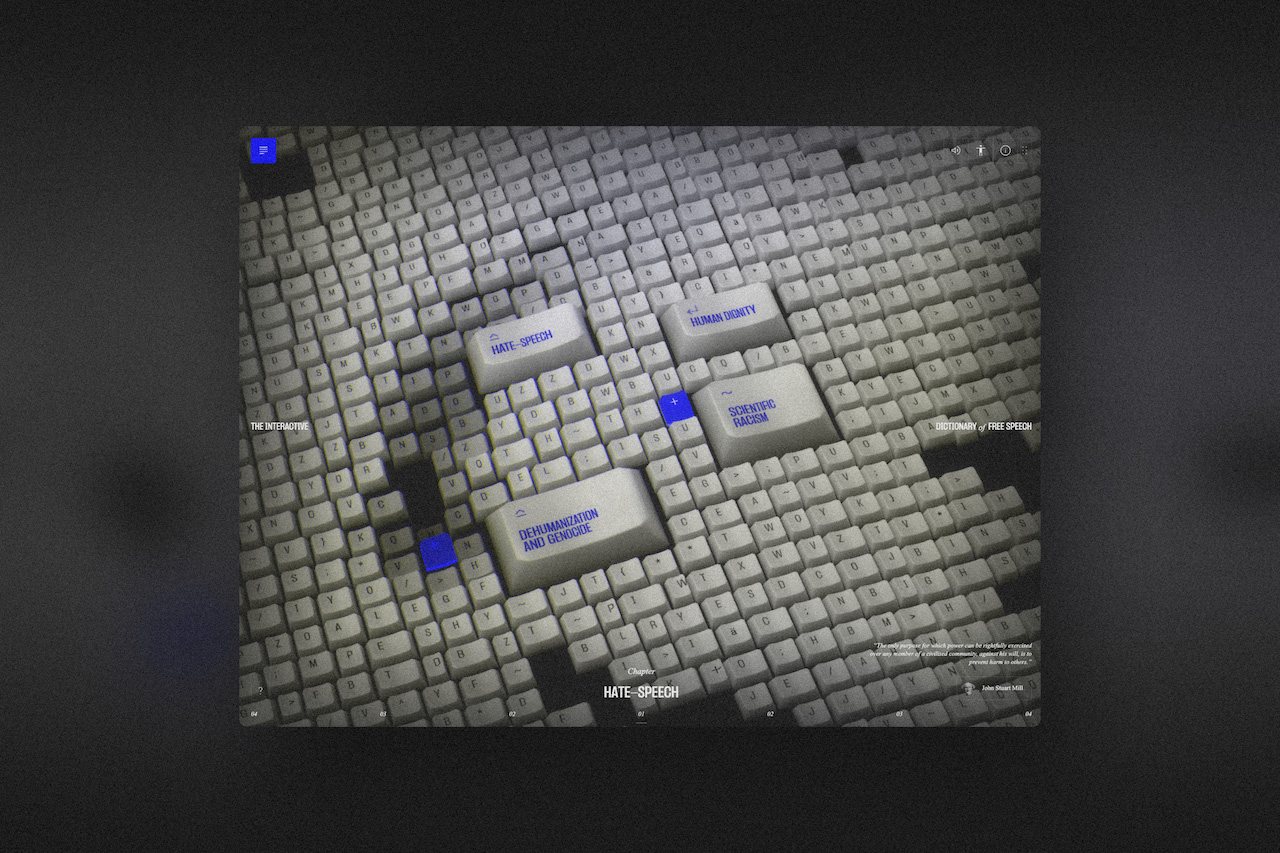3
Graphic Designer of the Year
Adrián Gubrica




Producing a great, original book is difficult, and creating a great original website is nigh impossible. To produce such a work, its creator must be proficient in many diverse skills – from graphic design to creating interactive animations, from video and sound mixing to programming applications, setting up servers and editing text. Only rarely does a talented person come around who is able to do all these things which would otherwise be handled by a team of specialists. Such a rare sight is called a unicorn. Adrián Gubrica’s project proves that he is that “mythical” being.
Through original and effective design, Gubrica’s website brings to people’s fingertips the topic of freedom of speech – a key feature of any democracy. He provides its users with educational content explaining the history of freedom of speech, phenomena such as cancel culture, hate speech, disinformation, post-truth and self-censorship. All that is presented in an interactive 3D environment in which disappearing keyboard keys serve as metaphor for the curbing of freedom of speech and the threat it poses to basic human rights.
The project is unique not only in its graphic qualities and the selected social topic, but also in its advanced technical rendition. In order to provide an immersive narrative, Gubrica experimented with new online technologies. The website visitors engage in various forms of interaction presented through animations and multimedia. A dramatic music score melds with the sound of clicking keys, and the individual chapters are arranged as a dynamic collage of documentary photographs, pithy headlines and aptly selected quotes. It is visually spectacular not for its own sake, but rather to effectively emphasize the content.
The Interactive Dictionary of Free Speech is an example of a work which connects graphic qualities with a profound social message. It is an exceptional endeavor in the sphere of graphic design as well as being a manifesto of the technological and creative potential of contemporary websites.
Lukáš Pilka
Monika Čejková
Martina Freitagová
Iva Knobloch
Danica Kovářová
Jan Králíček
Lenka Lindaurová
Tomáš Luňák
Michal Nanoru
Klára Peloušková